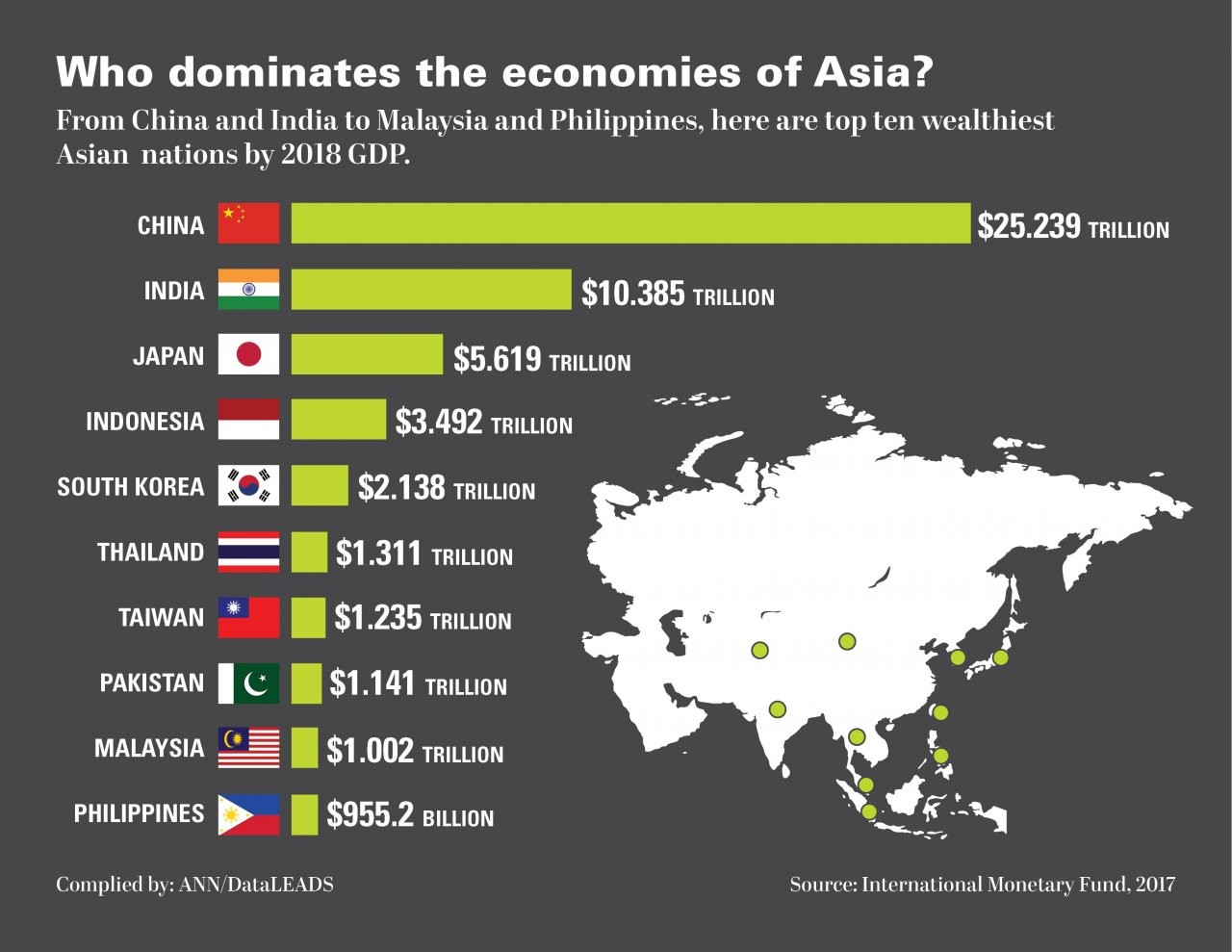Top Stories
International migration in Asia’s demographic transition
Author: Graeme Hugo, University of Adelaide
Every day in the Asia Pacific, millions of goods, financial products, services and people flow across borders. These movements are both a cause and consequence of the rapid economic growth enjoyed in the region. But the considerable liberalisation of regulations on capital and goods has not flowed through to international migration, even as masses of people have migrated across Asia.
The relationship between migration and economic and social development is complex. The demographic and economic circumstances of Asian countries are divergent, and, as a result, some countries suffer a labour shortage while others enjoy a surplus of workers. While there is an appreciation that the ‘brain drain’ losses of human capital caused as skilled people move away from home can have negative affects on low-income countries, there is increasing evidence that emigration can have positive consequences for all parties. As former Secretary-General of the UN Kofi Annan put it: ’The potential for migrants to help transform their native countries has captured the imaginations of national and local authorities, international institutions and the private sector. There is an emerging consensus that countries can co-operate to create triple wins, for migrants, for their countries of origin and for the societies that receive them’.
In fact, migration affects development both positively and negatively. Getting the benefits depends on the government. Governments can intervene to facilitate those elements of migration that have positive impacts and to reduce or ameliorate those which have negative consequences. So far, poor governance and a lack of cross-border cooperation have meant Asia hasn’t yet enjoyed the full benefits of migration between its borders.
So who migrates in Asia, and how do they do it? International migration data is generally poor, but it is possible to make some generalisations about the trends. First, women are increasingly active migrants — in several important flows they constitute the majority. Second, the ‘migration industry’ — made up of agents, travel providers, government officials and middlemen of various types — is growing rapidly. Third, the government is increasingly important in influencing both immigration and emigration. And fourth, there may now be as many undocumented migrants as those who entered foreign countries through authorised channels.
In the past two decades, many ordinary people in Asia, not just the elite, have come to consider whether moving overseas will improve their quality of life. Many people are also moving further away from their homes: there has been a significant increase not only in the movement between Asia-Pacific nations but also out of and in to the region. Asia’s migration is forced and unforced, documented and undocumented, permanent and non-permanent, work-related and not work-related.
Arguably the most important reason for this migration boom is the growing demographic differences between countries. The Asia Pacific contains both high-income and low-income economies and their demographic trajectories have differed. On the one hand, high-income economies are experiencing low (and, in a few cases, negative) natural increases in population because of an extended period of low fertility. This is leading to slow natural growth. Eventually, the number of people of working age is projected to decline — Japan is already experiencing this phenomenon. On the other hand, in low-income economies of the region, fertility decline has been more recent, although it has also been dramatic. Prolonged periods of very low fertility leads to a decline in the size and ageing of the workforce which can drive migration.
One of the major characteristics of Asian migrants is that they tend to send money back to their families, even in times of stress. Remittances to Asia-Pacific countries come from two main types of migrants. First, there is a diaspora of permanent settlers, most of whom live in OECD nations, and some of whom remit money to their families at home. Second, the Asia-Pacific is the pre-eminent source of the world’s contract labour migrants. Almost all of these labourers remit money to their families in their home country.
It is difficult to measure exactly remittances in Asia and the Pacific: much of the movement is illegal, many of the migrants come from isolated areas and there is a long history of remitting money home through non-formal, traditional channels. The World Bank has estimated global remittances in 2011 at US$501 billion, and the number has continued to increase despite the GFC. Remittances to less developed countries are now more than twice as great as official development assistance and almost as large as foreign direct investment. The scale is so large that remittances are now the largest source of external funding in several Asia-Pacific countries.
The increase in population mobility has been striking. The scale of the number who move has increased, the spatial patterning of where they move has grown more complex, and the composition of international movements has changed dramatically. International migration is both a cause and consequence of the rapid economic transformation in Asia, globalisation, political change and the development of education, among other factors and results. There is every indication that international population movements into, out of and within the region will continue to increase in scale and significance. While there is a great deal of variation between nations, it is clear that demographic, economic and social changes within the region will continue to favour an increase in international movement, as will differences between Asia and the Pacific on the one hand and Europe, North America and Australia/New Zealand on the other.
International migration will be a permanent structural feature of Asia-Pacific economies and societies. Policymakers in the region need to make a ‘conceptual leap’ with respect to international migration policy and recognise its long-term significance. Migration has the potential to improve the situation of people in poorer countries. But making this happen depends on policy coordination within countries of origin and destination.
Graeme Hugo is Professor of Geography and Director of the Australian Population and Migration Research Centre at the University of Adelaide.
This article appeared in the most recent edition of the East Asia Forum Quarterly,‘Demographic Transition’.
Read more here:
International migration in Asia’s demographic transition
China
China dominates Asian Economies
China, world’s second-largest economy stands tall with US$ 25.3 trillion and is up by 9% from 2017 followed by India at 10.38 trillion which is up by 9.8% showing growth over the preceding year.

China, world’s second-largest economy stands tall with US$ 25.3 trillion and is up by 9% from 2017 followed by India at 10.38 trillion which is up by 9.8% showing growth over the preceding year.
(more…)China
New Chinese regulation will require approval for foreign firms to publish online
A new Chinese regulation announced this week will require foreign companies and foreign-Chinese joint ventures to acquire approval before publishing content online, in the government’s latest move to tighten control of the digital realm.

A new Chinese regulation announced this week will require foreign companies and foreign-Chinese joint ventures to acquire approval before publishing content online, in the government’s latest move to tighten control of the digital realm. (more…)
China
What Alibaba Can Learn From Groupon


An employee is seen behind a glass wall with the logo of Alibaba at the company’s headquarters on the outskirts of Hangzhou, Zhejiang province, in this April 23, 2014 file photo.
Amid the spa discounts, restaurant deals and cut-price tickets on Groupon, Alibaba should be looking for one thing: lessons learned. As WSJ’s Alex Frangos writes:
The Chinese e-commerce giant on Friday disclosed a 5.6% stake in the once-popular, but lately shunned, daily-deals company. Groupon’s shares rose 41% Tuesday, on top of a nearly 30% rise Friday after a positive earnings surprise.
Groupon, which famously spurned a $6 billion takeover offer from Google, has become the poster child for fallen-from-favor tech companies. It had expanded too quickly on a business model that proved harder to execute in reality than in concept. Coupons, it turns out, don’t breed loyal customers. They attract cheapskates.
Advertisement
That may be what drew in Alibaba. Last week, Groupon’s stock was at its lowest level ever, the company’s market capitalization down to just $1.3 billion—from $16 billion after its 2012 initial public offering.
Alibaba says it wants to “exchange experiences” with Groupon. It has its own venture in the so-called online-to-offline space, Koubei, which Alibaba and affiliate Ant Financial last year committed to pour $1 billion into. Koubei is in a mounting dogfight with rivals Meituan-Dianping, backed by Alibaba rival Tencent, and Baidu’s Nuomi, to dominate coupons, discounts, online ticketing and the like.
Read the full column on WSJ.com.
Sign up for…
The investor looking to put money into China and Asian Markets ought to definitely contemplate the mutual funds supplied by various household of funds. Almost all of the massive fund firms have a fund that’s designed for exposure to the expansion in China.













